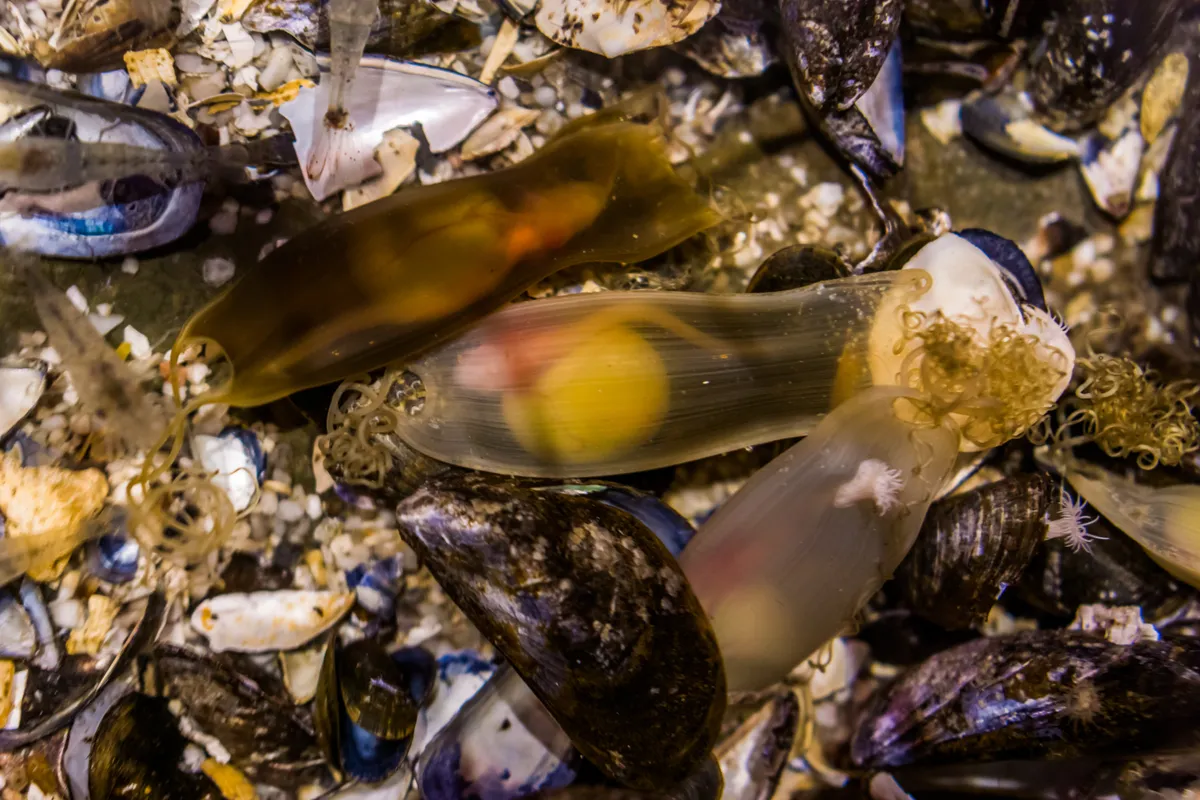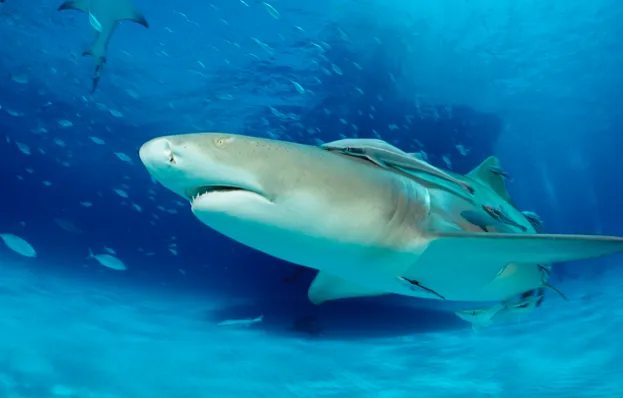Before the Spielberg's film Jaws was released in 1975, sharks were beautiful and fascinating fish. But the novel and film gave sharks an undeserved reputation as mindless man-eaters – but the truth is far more engaging. Author Michael Bright celebrates the wonder and variety of these ancient, much-misunderstood fish.
What was Jaws really about?
Not long after the original novel Jaws was published in 1974, author Peter Benchley acknowledged its “inadvertent tapping of a profound, subconscious, atavistic fear in the public, fear not only of sharks but of the sea itself”. The raw nerve he touched was not a new phenomenon: sharks have had an image problem since humans first ventured down to the sea. But attitudes have changed over the four decades since the book and film were released.
Research has revealed sharks to be remarkably sophisticated animals, and only a handful of more than 500 known species have the propensity to bite people.
Before he died in 2006, Benchley himself remarked that “the shark in an updated Jaws could not be the villain; it would have to be written as the victim, for, worldwide, sharks are much more the oppressed than the oppressors”.
How to watch Shark with Steve Backshall
We talk to Steve Backshall about his new four-part series Shark, why these ancient creatures are incredible, and his experiences diving with them.
© Sky
Where can great white pups be found?
The smallest-measured great white shark was an 85cm-long newborn pup weighing 12kg, caught in Edremit Bay on Turkey’s west coast in July 2011.
Catches of other young pups in the area, some not more than four days old, indicate that the eastern Aegean Sea is probably an important great white nursery.
Other nursery areas in the Mediterranean include the Sicilian Channel south of Lampedusa and the eastern Adriatic Sea.
Do sharks use their tails to attack?

The thresher shark thwacks its prey with its extraordinarily long, scythe-shaped tail.
Film from Pescador Island in the Philippines depicts a thresher heading for a shoal of sardines; it stalls, dips its nose and brings its tail over its back like a bullwhip, stunning several fish with a single swipe.
How long have sharks been around?
Fossils of sharks are rare – their cartilaginous skeletons do not preserve well. In fact, the oldest specimens comprise little more than teeth or tiny scales found in 460-million-year-old rocks. So when a fossil shark skeleton was discovered at a site in New Brunswick, Canada, in 2003, it was greeted with great excitement.
Scientists named it Doliodus problematicus, meaning ‘problematic deceiver’, and estimated that it was about 409 million years old, making it the oldest intact shark fossil ever found. The species would have resembled the modern bottom-dwelling angel shark, with the addition of a long spine on each pectoral fin. It also had replaceable rows of teeth, a feature of modern species that was previously thought to have been absent in the earliest sharks.
How can sharks still in egg cases avoid predation?

When a predator approaches a bamboo shark in an egg case, the embryo detects the intruder using electro-receptors in its snout.
The shark stops breathing and remains motionless until the danger has passed.
How do sharks learn?

A lemon shark photographed in the Bahamas © Reinhard Dirscherl
Research at the Sharklab in the Bahamas has revealed most of the lemon shark’s life-cycle. A lemon shark will return to its place of birth to give birth itself, even after several years away. Newborn pups head for mangroves in a lagoon on Bimini, where each patrols a small territory.
During the next five years, it stays in the lagoon with sharks of the same size, watching and learning different behaviours. For example, if a foraging shark adopts tight turns as a feeding strategy, others will follow suit shortly afterwards.
When they are about five years old, the sharks head out of the lagoon, although many linger close to the island until they reach maturity.
When was the megamouth shark discovered?
Megamouth was the biggest wildlife surprise of the 20th century. This flabby-finned, cavernous-mouthed, rubber-lipped, filter-feeding shark was discovered off Hawaii in 1976. Since then, a further 55 have been reported. It grows to 5.5m long and follows the daily vertical plankton migration between the surface and deep waters.
How common are shark attacks?
Shark attacks on humans are extremely rare. Speaking with BBC Wildlife, zoologist, broadcaster, writer and columnist Mark Carwardine said, “Over the years, I’ve spent an inordinate amount of time diving and snorkelling with sharks. But I’ve never been bitten. The likelihood of being harmed by one of the most feared animals on the planet is very small indeed.
Expert guide on how to avoid a shark attack
Shark attacks on humans are extremely rare, but should it ever happen, here's our expert guide on what to do.
©Getty
Discover more amazing facts about wildlife in BBC Wildlife Magazine.
A great white shark photographed in Spencer Gulf (South Africa) © Alastair Pollock Photography/Getty Images
